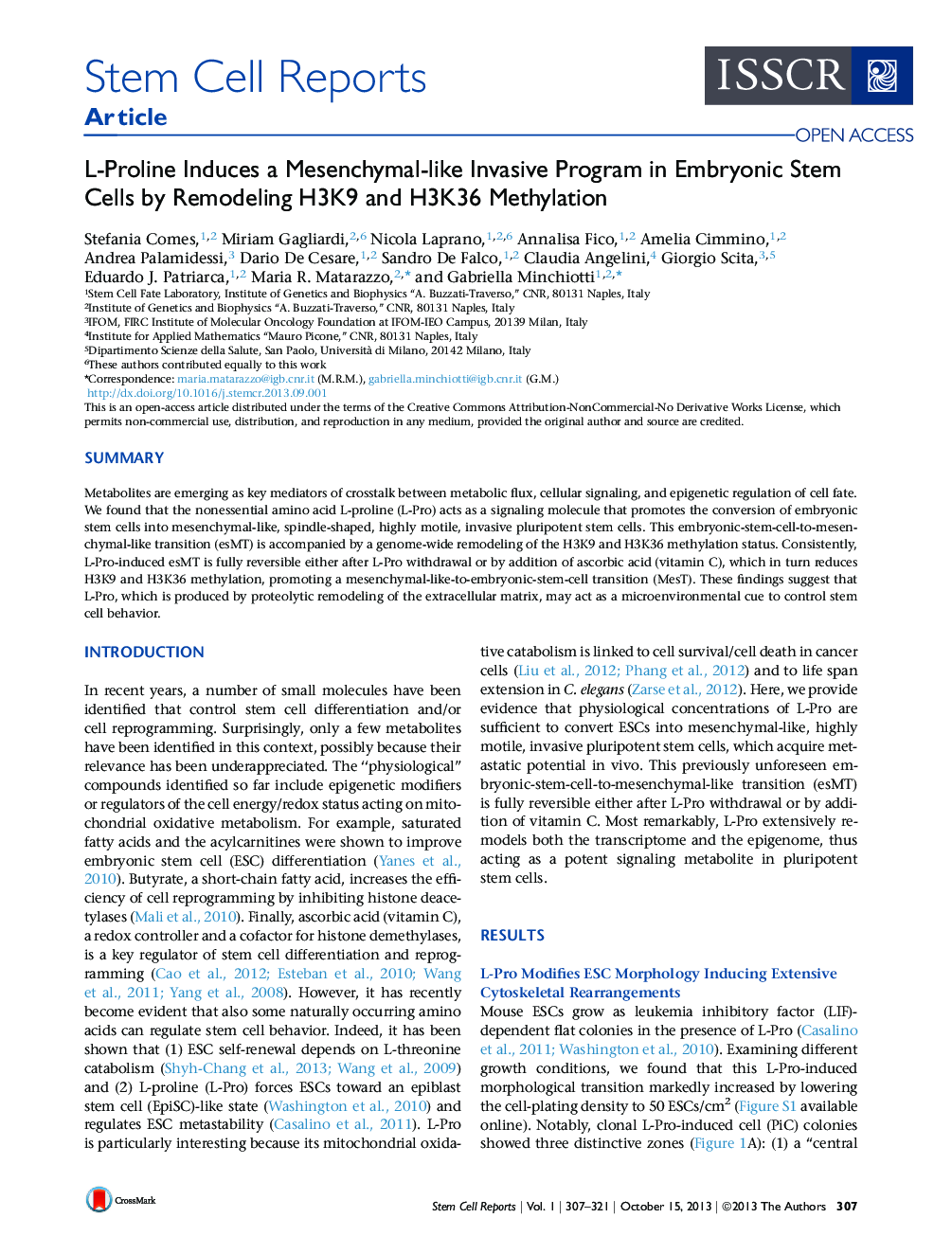| Article ID | Journal | Published Year | Pages | File Type |
|---|---|---|---|---|
| 2093840 | Stem Cell Reports | 2013 | 15 Pages |
•L-Pro induces a reversible embryonic-stem-to-mesenchymal-like transition (esMT)•The esMT is characterized by a dynamic redistribution of E-cadherin•L-Pro acts as an epigenetic modifier remodeling H3K9 and H3K36 methylation•L-Pro and vitamin C regulate esMT-MesT plasticity modulating H3K9/H3K36 methylation
SummaryMetabolites are emerging as key mediators of crosstalk between metabolic flux, cellular signaling, and epigenetic regulation of cell fate. We found that the nonessential amino acid L-proline (L-Pro) acts as a signaling molecule that promotes the conversion of embryonic stem cells into mesenchymal-like, spindle-shaped, highly motile, invasive pluripotent stem cells. This embryonic-stem-cell-to-mesenchymal-like transition (esMT) is accompanied by a genome-wide remodeling of the H3K9 and H3K36 methylation status. Consistently, L-Pro-induced esMT is fully reversible either after L-Pro withdrawal or by addition of ascorbic acid (vitamin C), which in turn reduces H3K9 and H3K36 methylation, promoting a mesenchymal-like-to-embryonic-stem-cell transition (MesT). These findings suggest that L-Pro, which is produced by proteolytic remodeling of the extracellular matrix, may act as a microenvironmental cue to control stem cell behavior.
Graphical AbstractFigure optionsDownload full-size imageDownload as PowerPoint slide
